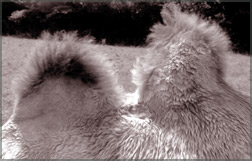|
observer |
|
|
|
|
|
OTHER LINKS |

|

|

|
7 Bizarre DelicaciesDifferent cultures inevitably have their own unique culinary expressions based on what is naturally available to them. Sometimes these traditions seem odd and sound distasteful, but on occasion, with a little sense of adventure, they can be very rewarding to the palate and to the experience. The list that follows offers seven regional delicacies that are embraced by the local populations. 1. Balut
Description: A fertilized chicken or duck egg is buried in the ground for a week, after which the egg - containing a half-formed fowl - is soft-boiled. Balut is eaten out of the shell with a spoon; there is no need to worry about choking, as the bones and feathers are only partially formed. This delicacy is widely believed to be an aphrodisiac and is usually sold by street vendors. 2. Casu marzu
Description: Casu marzu literally means "rotten cheese." This pungent delicacy is loaded with live insect larvae whose digestive processes give the cheese its soft, creamy texture by breaking down the fats it contains. The cheese also seeps a liquid called "lagrima." The larvae are white worms that measure approximately one-third of an inch and can jump approximately six inches when disturbed. Many people remove the worms before feasting on this delicacy, but others prefer to leave them in. Because eating the cheese can lead to intestinal infections - the worms can live in your intestines and cause severe lesions in their attempts to dig through your intestinal walls - the product is banned in Italy. However, enforcement in Sardinia is lax and it can be readily found on the black market. 3. Camel humpsDescription: Camel is becoming more and more popular throughout the Middle East and Asia. The meat has a taste similar to beef, though its texture is much tougher. The hump is considered a delicacy because it is the fattiest and most tender part of the camel.
The fatty tissues within the hump are used by the camel to store energy. Camel humps can be eaten raw and warm from a freshly slaughtered animal, but they are generally boiled after the last remnants of body warmth have cooled. Camel humps have also been deep-fried for more than 1,500 years. This dish is both tender and crispy, and the hue of the meat is purple. Because camel was historically an important mode of transportation, eating one was rare and added to its status as a delicacy. 4. HakarlDescription: This Icelandic delicacy is made from shark meat. As soon as the shark is caught, it is buried in the ground and often topped with manure. Allowing meat to decompose is a traditional method of preservation for many cultures. After the shark has decomposed in the ground for between two and six months, it is dug up, and the meat is sliced and served cold. The dish has a strong ammonia smell, an undeniably strong flavor, and some people claim that it tastes like cheese. 5. CibreoDescription: This traditional Tuscan dish was once reserved for the poor, but it has since become a delicacy served at many fine restaurants. The cibreo is the comb of the cock - the red crown on the head of a rooster. The dish of the same name is generally a stew composed of the rooster parts that would be considered waste products, such as giblets and testicles. 6. Bird's nestDescription: There is no misrepresentation with the name of this popular Chinese dish, which is actually made from a bird's nest. The male swiftlet, a small bird found in Southeast Asia, has two glands under its tongue that produce saliva. The birds regurgitate the substance as fine strands, which harden and stick to the walls and ceilings of the caves they inhabit, forming their nests. These nests are harvested and sold to restaurants for between $500 and $1,000 for a couple of pounds. Most recipes for the soup simply call for simmering the nest in chicken broth. The nest soup has a rubbery and rather bland taste. Historically, the delicacy was thought to have medicinal values and it is widely considered an aphrodisiac. 7. Cobra bloodDescription: In many parts of the world, the cobra enjoys an elevated status as a symbol of strength and virility. Thus, in these regions, it is assumed that drinking the blood of the snake can bestow upon the consumer these same characteristics. It is also considered a stimulant and general health aid. Cobra blood is usually combined with liquor and served as a shooter. To prepare this shot, a living cobra is beheaded and the blood is drained into a glass that contains arak. The heart is often extracted, eaten and washed down with several shots of the blood mixture. Black and white cobra blood is relatively inexpensive, between $5 and $8, but the blood of a king cobra is more than $100. Though many of these delicacies may seem rather repulsive, they are regularly consumed by the people of their respective regions. So don't be afraid to go out on a limb when your travels take you off the beaten path. They are called delicacies for a reason. |










